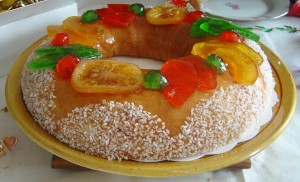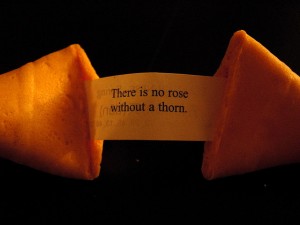As everyone knows, New Year’s is a big holiday that was recently celebrated around the world with food, fireworks, and family meals. Folks in many places additionally rung in 2015 by attending religious services or watching specific programs. Addresses by local politicians and the singing of the national anthems were commonplace as well. Of course, readers in several countries no doubt put up their customary evergreen trees and exchanged gifts in honor of the day.
For all that most places have in common on this festive occasion, each country is home to some interesting theories on what to wear and eat on New Year’s Eve to ensure prosperity in the year to come. Of course, there are no limits to people’s creativity in kicking the old year out and welcoming in the new.
Residents in many places knew that they should choose their undergarments with especial care. Turkish and Spanish citizens typically selected red items, but Argentineans preferred pink and Columbians felt the same way about yellow. These hues are thought to respectively bring about success, true love, and good luck.
As for outerwear, polka-dotted outfits were no doubt widely seen throughout the Philippines and white attire was likely commonplace on the streets of Brazil. After all, the colorless clothes are thought to keep evil spirits at bay and the dotted garments represents money in the months to come. However, most of us just put on something festive for the occasion and let the good times roll.
There is no doubt that special holiday foods and beverages were part of the fun in many places. King’s cakes are popular in a number of countries and these confections are often embedded with items that signify something to the participants. In France, this item is a small figurine that allows the person who finds it to become king or queen of the feast. In Greece, the person who finds a coin in their cake is simply the luckiest person in attendance.
Those living in the southern portions of the United States naturally consumed large quantities of black-eyed peas and greens in order to obtain wealth in the upcoming year. Lentils likewise continue to be a big hit in Chile for much the same reason. In Spain and in many South American countries, celebrants continued to woof down the traditional 12 grapes for good fortune in the New Year. Russians instead burnt papers inscribed with their wishes and drank the ash in their midnight champagne.
On a day that is set aside for looking ahead, fortune telling continues to be popular. In Germany and Finland, predictions were made by analyzing the shapes that melted metal took on when it was thrown into water. Eggs were broken into glasses and then left out all night in order for El Salvadorians tell what the future holds. Scottish people still seem to take a more active approach to the future as they believe that good fortune can easily be acquired by having a dark-haired young man be the first to cross a building’s threshold in the New Year.
However, more unusual customs abound as well. Americans continued to drop things from great height such as the sparkling ball in Times Square in New York and the giant peach in Atlanta. Meanwhile, the Irish whacked their bread against their walls to ward off evil and Brazilians threw flowers into the sea to honor the local sea goddess. Austrians all dropped what they were doing and waltzed around to the strains of “The Blue Danube” at midnight while Brits still seem to prefer simply singing “Auld Lang Syne” en masse.
The Ecuadorians instead burnt effigies of the old year while men in drag pretended to be its’ widowed spouse and begged for coins from those that passed by. Brave souls might also have chosen to jump over the burning scarecrows in order to make their wishes come true.
Flying objects likewise continue to be a New Year’s trend in many countries. Turkish citizens dropped pomegranates, Puerto Ricans tossed water, and confetti went swirling through the air in many places. Johannesburg residents even used to fling furniture. However, that particular tradition has since become obsolete after pedestrians were injured and the local police started actively trying to end the practice.
Here’s hoping that everyone has a safe, happy, and prosperous 2015!
Sources: Wikipedia, Boston.com, Telegraph, India Times, BuzzFeed, About Travel










